Were Marcel Duchamp and Man Ray’s 1947 "Priere de toucher" (Please Touch) Artworks Inspired by Dr. George Hodel’s Surrealist Crime Scene Masterpiece?- Update 2022
July 2, 2022
Birch Bay, Washington
UPDATE TO 2016 Blog Post
June 25, 2016
Los Angeles, California
Throughout my investigation, I have discussed at length my father’s “Murder as a Fine Art” crime-signature M.O. I have linked it to what I term, The Man Ray Nexus. (The Minotaur, The Lovers Lips, L’Equivoque, Juliet Stocking Mask, adding to it the most recent 2015 discovery of Man Ray’s Alphabet for Adults book, published by his friend and fellow surrealist artist, William Copley in Los Angeles in 1948. That book contained the secret inclusion of a drawing of George Hodel “quarreling” (the letter “Q”) inside the courtyard of the Sowden House. (Most Evil II, Chapter 9, Surrealist Enigmas–Riddles Wrapped in Mysteries.)
The below photo shows 1947 LAPD Elizabeth “Black Dahlia” Short crime scene photo compared to Man Ray’s 1947 photo Priere de toucher (Please Touch) on display at the San Francisco Museum of Modern Art.
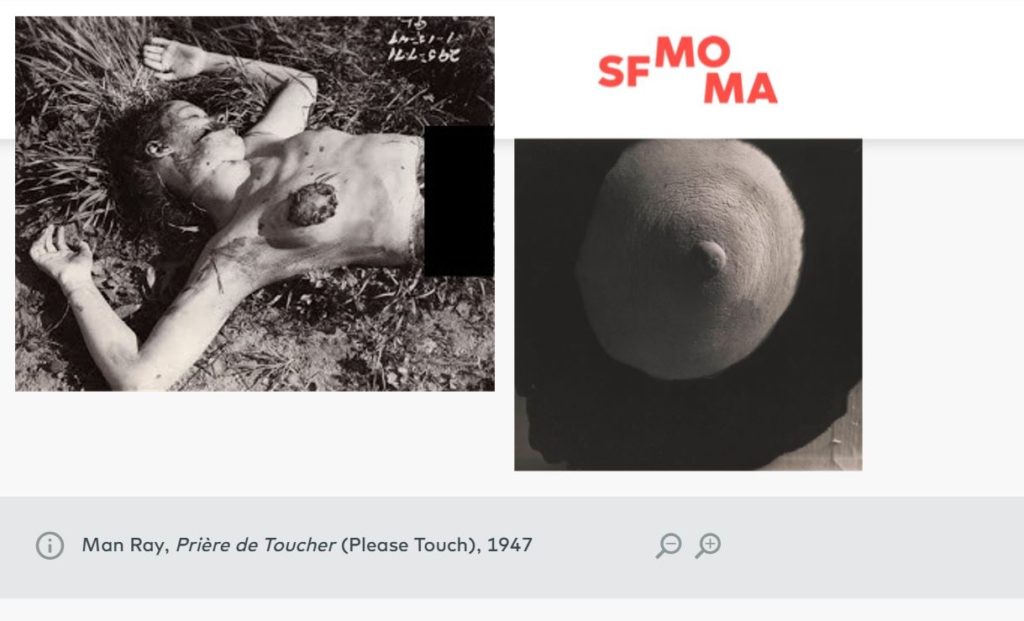
Coincidence or a Surrealist Tribute to George Hodel’s
Real Death Masterpiece?
In their book, Exquisite Corpse: Surrealism and the Black Dahlia Murder (Bulfinch Press 2006), authors Mark Nelson and Sarah Hudson Bayliss reference a 1947 artwork by Marcel Duchamp as follows:
In July of 1947, Duchamp collaborated with the artist Enrico Donati to create 999 handmade covers for the deluxe edition of “Le surrealisme en 1947,” the catalog accompanying the Exposition Internationale du Surrealisme at Galerie Maeght in Paris. Alongside the words “priere de Toucher” (Please Touch) the covers featured a three-dimensional, foam rubber sculpture of a breast surrounded by black velvet. A more affordable edition of the catalog had a photograph of the same breast by the French photographer Remy Duval, reproducing the image from the deluxe version.
…
Photo of Marcel Duchamp’s “Please Touch” (1 of 999) which sold in New York in 2010 for $254,500. Clearly, this is the source of Man Ray’s 1947 photograph of the same name.
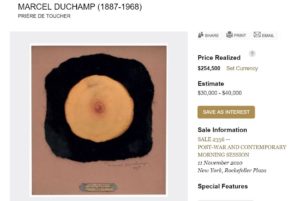
The artworks created by both Duchamp and Man Ray following just months after Dr. George Hill Hodel’s “Murder as a Fine Art” on January 15, 1947, a murder masterpiece and homage to Man Ray, begs the question:
Did Duchamp and Man Ray recognize and return the homage to Man Ray’s close friend, George Hodel with a wink and a nod as their joint creations of- priere de Toucher (Please Touch)? Does their artwork literally represent a piece of the missing puzzle? Is it an exact copy of Elizabeth Short’s excised right breast as well as their insider’s knowledge of the crime? (We know the crime scene photographs were in possession of newspaper reporter Will Fowler, son of screenwriter, Gene Fowler, and we have established that they would have been readily available for distribution to George Hodel’s “inner circle.”)
(SKH Note- One of the most interesting overlooked facts related to the crime scene and follow-up investigation the following day at the coroner’s autopsy is this. Elizabeth Short’s excised right breast was never recovered. While other cuttings were found placed inside the victim’s private parts, the breast was not and remains missing to this day. My opinion is that it was kept as “a trophy” after being surgically removed at the Hodel/Sowden House. Never left the home and possibly could have been the “something buried at the house” referenced by the unidentified LAPD police witness. This would also give extra emphasis and underscore the possibility that Duchamp and Man Ray in their follow-up artwork, were paying homage to the “missing piece of the puzzle.” )
Baudelaire Love as the Surgeon/Victim
Charles Baudelaire
1821-1867
“Squibs. I believe I have already set down in my notes that Love greatly resembles an application of torture or a surgical operation. But this idea can be developed, and in the most ironic manner. For even when two lovers love passionately and are full of mutual desire, one of the two will always be cooler or less self-abandoned than the other. He or she is the surgeon or executioner; the other, the patient or victim.”
Charles Baudelaire
George Hodel worshiped and identified with Charles Baudelaire, whom he read and studied in the original French. It is likely that Father read these words from Baudelaire’s Journal, and took them to heart, and would later translate and apply them as part of his own surgical crime.
The following article, written by drama critic, Ted Le Berthon, appeared in his weekly column “The Merry-Go-Round” in the Los Angeles Evening Herald, on December 12, 1925. The article describes my father, George Hodel, who had just turned eighteen but was passing himself off as “twenty-one” so he could drive a taxi in downtown Los Angeles. (Le Berthon changed his name from “Hodel” to “Morel” and dad’s self-published elitist magazine Fantasia to “Whirpools.” I quote the article here in its entirety:
Los Angeles Evening Herald
December 12, 1925
The Merry-Go-Round
By Ted Le Berthon
The Clouded Past of a Poet
GEORGE MOREL is tall, olive-skinned with wavy Black hair and a strong bold nose. His eyes are large, brown, somnolent. A romantic, hawklike fellow, a pianist, a poet, and editor of Whirlpools, a bizarre, darkly poetical quarterly.
“George is a nice boy but…”
How often did one hear that!
What his friends hinted was that George, being young, was inclined to write of melancholy things.
Of course, George could have pointed to Keats, Rupert Brooke, or Stephen Crane for precedent, but…”It’s not George’s gloom, his preference for Huysmans, De Gourmont, Poe, Baudelaire, Verlaine, and Hecht that pains us,” these “friends” would parry, “but his stilted elegance, his meticulous speech!”
George drowned himself at times in an ocean of deep dreams. Only part of him seemed present. He would muse standing before one in a black, flowered dressing-gown lined with scarlet silk, oblivious to one’s presence.
Suddenly, though, his eyes would flare up like signal lights and he would say, “The formless fastidiousness of perfumes in a seventeenth-century boudoir is comparable to my mind in the presence of twilight.”
One might have answered “What of it?”- but one just didn’t.
As one of George’s “friends” put it: “He’s young. He’ll get over it. What he needs is contact with harsh realities. At present his writing is tenuous, dreamy, monotonous–and he is like his writing.”
A Future Realistic Novelist
I HADN’T seen George for about a year…
And last night, strolling up Spring street in a sort of Morelian reverie myself, I was startled by hearing a familiar voice. The next moment I saw a tall young fellow in a taxi driver’s uniform seize a burly, argumentative man by the coat lapels and growl menacingly:
“Come across with that taxi fare or I’ll smack you in the nose, right here and now!”
The speaker was GEORGE MOREL.
The Man Ray Nexus
Update July 2, 2022
Just this morning I came across a link to an article written by Michael R. Taylor in 2009 entitled: “The Genesis, Construction, Installation, and Legacy of a Secret Masterwork- Chapter 2″. For those interested in a detailed description I would recommend reading the full article at the below-attached link.
Below graphics are from that article:
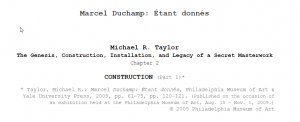
The Genesis, Construction, Installation, and Legacy of a Secret Masterwork Chap 2.
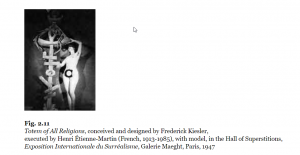
The above photograph uses Duchamp’s excised breast to cover the nude’s vagina.
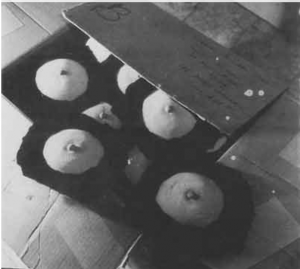
The above graphic shows Duchamp’s breasts flowing out from a box.
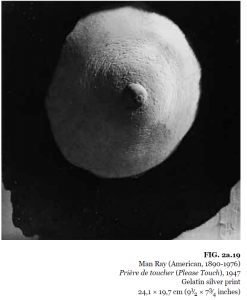
The above graphic shows Man Ray’s photo of Duchamp’s “Please Touch”
Man Ray’s 1947 photograph of Duchamp’s, “Please Touch” would have been taken just 2-3 months after the torture-murder of Elizabeth “Black Dahlia” Short. As previously indicated, I suspect that the excised breast shown and exhibited by Duchamp at the Paris Surrealist Exhibit in 1947, was inspired by his viewing of crime scene photographs of the actual body shared by reporter Will Fowler.
Will Fowler, a reporter for the Los Angeles Examiner, and son of famed Hollywood screenwriter, Gene Fowler, claimed he and his photographer Felix Paegel, “were the first to arrive at the crime scene and after taking photographs of the mutilated body, he closed her eyes.” (Later, facts disproved his claims, and it is known that he had a reputation for exaggerating the truth beyond all recognition. Fowler himself in his biography admitted he was the one that created the false myth that the victim “couldn’t have sex because she had an infantile vagina.”)
As indicated in my writings, it is my belief that Will Fowler was likely the source of/for distributing the crime-scene photographs to his dad and his father’s inner circle of screenwriter friends that would include: Ben Hecht, Steve Fisher, and Rowland Brown. (Hecht and Fisher both in public newspaper articles in the days following the murder, claimed: “they knew the name of her killer and police would soon have him in custody.” Their friend, Rowland Brown, was the sometime lover of Dorothy Hodel, who though divorced was living with her ex-husband, Dr. George Hill Hodel from 1945-1950. (Dorothy and we three sons were away from the residence, staying with our uncle Gene for several weeks in January 1947. (Documented by investigators in the 1950 secret Hodel/DA/Black Dahlia Files.)
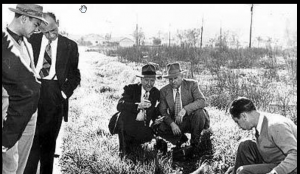

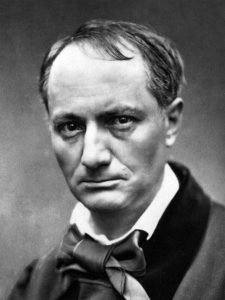
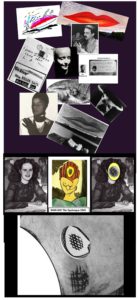
Steve, do you know if your father ever associated with Caltech rocket scientist John W. Parsons? Parsons was a devotee of Aleister Crowley and a hedonist. His home at 1003 Orange Grove Avenue sounds like another Franklin House: debauched parties were held regularly in the 1940s and Parsons also rented rooms to artists and actors. One visitor was L. Ron Hubbard.
Janet Reitman’s book “inside Scientology” describes Parsons in detail (pages 12-19).
George Pendle wrote a Parsons biography called “Strange Angel.”
Karen: Yes, I’m familiar with the book. Don’t know if GHH was in personal contact with Parsons, but certainly they were “kindred spirits.” GHH’s friend/accomplice Baron Ernst Harringa was personal friends with SMITH, who ran the Church of Thelema, but apparently was not active in the Crowley activities? Harringa is mentioned in Smith’s book.
Karen, Steve: “Strange Angel” does provide interesting background on the Pasadena of GHH’s youth. Seems to have been an almost-independant fiefdom run by robber barron types. Some of these folks were quite brilliant, some of them had very strange ideas. Think Monty Beragon (from Mildred Pierce) and add a genius IQ. -LW
Steve, the power of ancestral healing could help you.
What would you think of a spiritual cleansing ceremony at the Franklin house? Heal the wounds of all your forefathers and foremothers. They would thank you.
Peace always,
Yolie 💎
Hey Steve, I went to your Dad’s house earlier this month for the open house. I felt something in that house. I sent you a tweet, I’m on Twitter as @CamDimez so DM me, would love to talk!
Is it possible that Man Ray’s photo is that of Beth Short’s actual nipple, preserved?!! I can’t help but think that these men possibly mutilated her as an experiment. It is too coincidental that I can’t rule that idea out. Where does the original “piece”, that was photographed kept? Does it still exist? If so, has anyone tested to see what it is made of?!
By the way, I have had a long-time fascination with this case. This new info has me excited! I am so glad others are still interested too in trying to find some answers.
N.A. Then you can follow the massive amount of new information and linkage in the three follow-up books: Most Evil, BDA II and Most Evil II. Regards.
N.A. The photograph that Man Ray took was from Duchamp’s foam rubber “artwork”.
I believe the inspiration for that most likely originated from the January 15, 1947 crime scene photos that showed closeups of the excised right breast which was never located. (I suspect the surgeon/killer, Dr. George Hodel kept this at the Sowden/Franklin House as a “trophy.”
But as having knowlidge in casting I believe this Isite a casting from a real breastfeeding. Because you can see it on three skin.
I think Man Ray and others where involved in the crime. Have you seen “fantasies of Mr Seabrook” phits? Horrible likeness with the Black Dahlia crime.
.
Hi, Steve:
Having read all your books, I am greatly impressed by your detective work in inducing the controlling concept of “murder as a fine art.”
I don’t know if you have addressed this elsewhere: Why did the people who seem to have known that GHH killed ES (and possibly others) continue to socialize with him, and continue to play games and drop hints they had secret info (Man Ray, Duchamp, Copley, etc.)? Were GHH’s murders kind of a secret initiation into the circle and they were also psychopaths? Did they think that they should be blase about conventional values? Were they afraid of telling on him?
Maybe this is a question for their biographers.
Also, I would be interested in seeing if their personalities or their art changed after knowing GHH.
SR: Thank you for the kind words. Much appreciated.
As to your questions.
Certainly the Dadaists were as you say, “blase about conventional values.” Actually, their intent was to strike out at conventional values. I think also, as you have noted there was a combination of fear and in a strange way, “respect” for GHH who had, from the surrealists perspective, truly created a “readymade piece of art” with his Black Dahlia masterpiece. Cannot rule out the possibility that some may have participated? While there is no real evidence to support that, I now am more inclinded to believe that Fred Sexton and or Baron Harringa may have been directly involved in the actual murder. The clues found in Man Ray and Copley and Duchamp’s art work were all after the fact, so maybe a form of “inside knowledge” just too special to not document in some form?
Best, Steve
Has anyone ever made the connection between Man Ray’s photograph “Minotaur”, the placement of Black Dahlia’s body and Duchamp’s mixed-media artwork of a headless female body sprawled behind a wall (on display at the Philadelphia Museum of Art)? I believe the key to all three is the myth of the Minotaur, imprisoned on the island of Crete and demanding sacrifices of young people. I believe the two artists and doctor friend challenged each other to a sort of performance art. Man Ray’s medium was photography, Duchamp’s paint and “ready-mades” and Hodel’s—-the human body. It wouldn’t be the first time “artists” have challenged each other; remember Lord Byron, Shelley and Mary Shelly challenged each other to write the scariest ghost story. The result? The novel Frankenstein. Man Ray, Duchamp and Hodel all creates their own “Frankensteins”.
Hi Emily: That is precisely the crime signature I present in my five books. “Murder as a Fine Art”. My father plagiarized and copied from Art, Literature, film in his serial crimes. To outdo and oneup his surrealist friends, as I say in BDA he used Elizabeth “Black Dahlia” Short’s body as his canvass and his scalpel was his paintbrush.”
My books include Duchamp’s Etant Donnes with numerous other art works (at least seven from Man Ray’s art) included as his crime-signatures as “taunts.” And, yes, George Hodel was The Minotaur, and his surrealist friends KNEW IT. Suggest you read the books it’s all there. Best, Steve.
Was the model for Man Ray’s “Minotaur” the artist Meret Oppenheim? She actually looked like ES. Also, Meret’s art – particularly “Cannibal Feast” is incredibly creepy & absolutely in keeping with all of these themes.
Also, Man Ray’s famous “Cadeau” has 14 copper tacks – wasn’t ES probably murdered on the 14th of January? Maybe just weird coincidences.
Leigh:
Yes, ES was taken from the bar by “two men and a woman” and seen by LAPD Beat officer Meryl McBride on Jan 14th afternoon hours around 5pm. So crime likely occurred late night on Jan 14th and into early morning hours of Jan 15th before being posed at vacant lot around 6am. No, doubt any link to the 14 copper tacks as it seems his finding her on that date was not planned and beyond his control.
Not sure who the model was for his 1934 Minotaur photograph? Regards, Steve
TY for the response… it’s all quite fascinating and I’ll never look at my art history minor in quite the same way!
Hi Steve, I’m wondering if the basement was ever excavated because during the phone tap there were sounds of a woman screaming and sounds of shoveling etc.
Mat: Lot of follow-up on your reference, but no actual excavation. Owners will not agree to do it.
Make a strong case of the woman recorded screaming and being beaten in the basement as a probable murder “in progress” while the stakeout officers took no action. (They were five minutes away.) At the very least it was a serious felony assault with a deadly weapon. A cadaver dog “Buster” searched the basement and alerted to “human remains.” Soil samples also confirm and were positive after analysis they showd positive “for human remains.” (You can use the search box on my blogsite to search keywords for multiple blogs on the follow up investigation to the DA recordings etc.) Regards, Steve.
No wink. No nod. No knowledge of anything ‘George’
The breast was a plaster cast made by Duchamp of his lovers bosom- Maria Martins. The manufacturer that made the 999 foam replicas used Duchamp’s plaster cast (of Maria Martins breast) to do so. Duchamp and Donati hand painted the foam replicas. Has absolutely nothing to do with George Hodel.
Mike:
Not talking about anything related to “the making” of it. I’m referencing the “inspiration” which preceded the artwork by just three or so months. (Incidentally, according to the article, as I recall it, the plaster cast of Maria’s breast was abandoned and they decided to go with the rubber “falsies”. What is particularly troubling to my eye is the fact that the samples/photos I’ve seen show, not a well-rounded edge, but rather one that appears cut and irregular, jagged, just as we see in the autopsy photo.
Excerpt from article:
…
“Duchamp’s original idea for the catalogue, which was limited to 999 copies, was to carve the breast in shallow relief in carefully prepared rectangular blocks of plaster, affixing a small nipple at the end by using a tiny amount of leftover plaster that he rolled between his thumb and forefinger; the entire block would then be mounted in a deeply recessed book cover. The artist produced two prototypes of this laborious plaster edition in June 1947, before Enrico Donati persuaded him to reconsider his time-consuming approach to the project, since the publisher required nearly a thousand covers under a relatively tight deadline. Donati’s solution was to purchase a large number of foam-rubber “falsies,” after discovering one in a store near his studio, which both artists then hand-colored in May 1947:”
The plaster cast wasn’t abandoned. The idea to hand-craft 999 individual plaster breasts-was. Instead 999 ‘falsies’ were made in foam from the plaster cast of Maria Martins bosom. Each foam ‘falsie’ was hand painted by Duchamp and Donati. Donati actually suggested the falsie and convinced a manufacturing company to produce the foam falsies ( of Maria Martins bosom) from the plaster cast. For more information, history and personal notes- view the archives on the specific piece at the Philadelphia Museum of Art.
Mike:
Regardless, be it, either way, my references and suggestive linkage have to do with the concept-the inspiration for the “artwork” which has nothing to do with the making of it. We know that Man Ray, Duchamp, and Copley KNEW that “George did it” which preceded “Please Touch” by several months.
Steve:
Isn’t it possible the “inspiration” went the other direction? That is to say, Duchamp “leaks” his secret project to produce a landmark work of “installation art” to his good buddy Man Ray — a “shocking” perverse twist on the traditional female nude, reimagined as a “readymade” evoking a crime & torture magazine — then Man Ray leaks it to George and George beats Duchamp to the punch?
Best regards,
LW
LW:
Sure. Assuming Duchamp had his planning/prototype drawings were well in advance of the July 1947 Paris show? Say, he was planning the project in 1946 and GHH by way of Man Ray became aware of or actually saw some drawings that Duchamp had shared with Man Ray. Then he could have “beat Duchamp to the punch” so to speak and included it in his torture/murder. Inspirator or Inspiratee the result is the same.
Do you believe that your father took pictures of the crime scene to preserve and possibly show others his work of “art”
Ps. I’m really glad you are continuing to give updates. I thought they may stop when you moved back to Washington.
Michael:
Thanks. No, will keep updating and will be resuming work with the production/ filming on the docuseries hopefully to air next year.
I now believe there is a good probability that my father did take his own crime scene photograph(s). Possibly some at the Sowden/Franklin House and more at the actual vacant lot. See my 2019 blog on the subject thanks to Director/Screenwriter David Lynch. https://stevehodel.com/2019/04/12/director-screenwriter-david-lynch-reveals-new-old-clue-to-black-dahlia-investigation-in-dinner-with-john-john/
Thank you and wow. No doubt in my mind that the body was posed intentionally as an “artistic” expression. You had me convinced already, but the nighttime shots of the crime scene confirms it imo.
Always interesting, your updates reveal more layers to the perverse motives of “Fine Art” as motive in the Elizabeth Short murder, mutilation, dismemberment and public display as time rolls by. I’m anxiously looking forward to your mini documentary on this case slated for early 2023. Fantastic work by a dedicated law enforcement agent who never gave up the search for actual facts in a case long gone ice cold with barriers of political power guarding every potential lead with layers of myth and misdirection. Once you traversed that labyrinth to the Minotaur there was the unimaginable personal chore of unraveling that cord
and dealing with the dynamic truth exposed of your own Father turned monster. Thank you for all your hard work and dedication over the decades to bring the facts in this case to light for all to see.
Dennis E:
Thanks Dennis. Thanks for being along for the ride these past decades. Hard to believe it’s been this long, but there you have it. Best, Steve